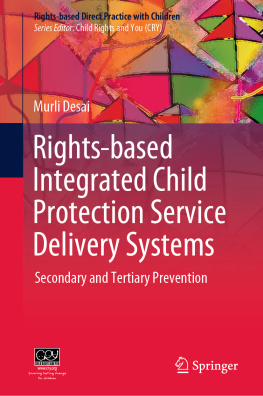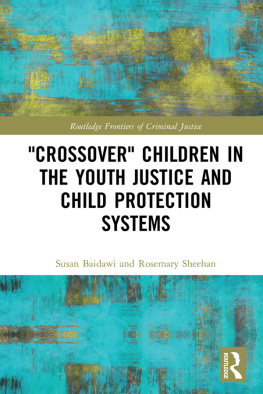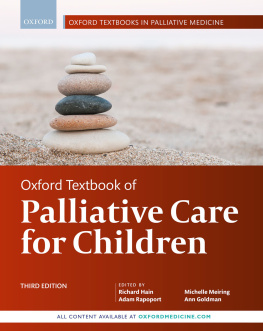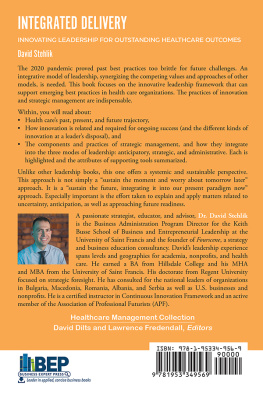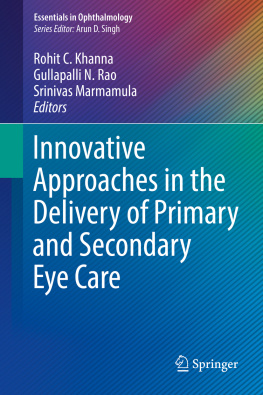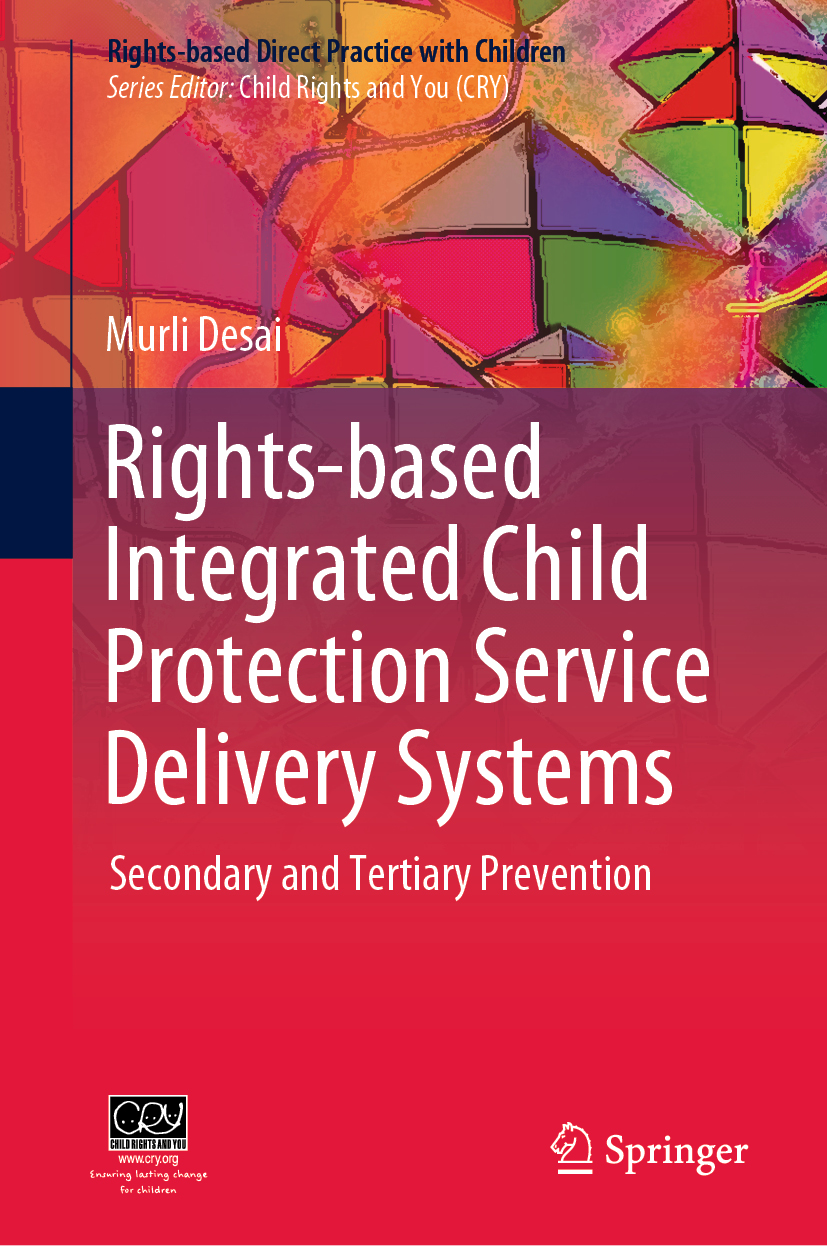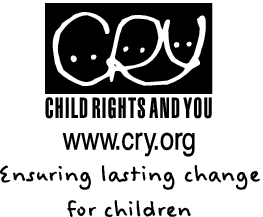Rights-based Direct Practice with Children
Series Editor
Child Rights and You (CRY)
Mumbai, Maharashtra, India
About the Series
This series provides comprehensive source material for teachers, trainers, facilitators and field workers in direct practice with children. It draws linkages among the foundation of life skills of self; psychosocial, sociological and critical theories of child development, childhood and family; the ideology of child rights; the methodology of direct practice with children comprising approaches, methods and skills, drawing from the professions of social work and counselling; and the preventative framework of service delivery systems for children, based on the public health care prevention model.
Each module of the sourcebooks comprises appropriate concepts and theories for developing users understanding of specific topics, and recommends a range of relevant activities that they can adapt to facilitate participatory learning of different target groups in different contexts. Most of these activities have been piloted in the field by select development support staff of Child Rights and You and their project partners.
This series makes a unique contribution as training and reference sourcebook for professionals and practitioners of child rights across the world, and especially in developing countries.
Series Editor
CRYChild Rights and You (CRY) is an Indian NGO that believes in every childs right to a childhoodto live, learn, grow, and play. For over four decades, CRY and its 200 partner NGOs have worked with parents and communities to ensure lasting change in the lives of more than 2,000,000 underprivileged children, across 23 states in India.
CRY was founded in 1979initially the dream of a young 25-year-old airline purser, Rippan Kapur. Rippan had a deep faith that happy, well-cared for children are the basis of a society worth living in, and that every single person or institution has the immense potential to be part of lasting change. Today, it continues to be committed to its vision for a happy, healthy and creative childhood for every child. Its goals and work on the ground include ensuring that children in CRY-supported programmes have access to free and quality education, primary healthcare, reduced rate of child malnutrition and that they are safe from violence, abuse and exploitation. It also works towards making sure childrens voices are recognised in issues that affect them. CRYs reason for being is to ensure children can live, learn, play and express themselves, and to bring about lasting change in childrens lives.
For more information please visit us at www.cry.org.
More information about this series at http://www.springer.com/series/15428
Murli Desai
Rights-based Integrated Child Protection Service Delivery Systems
Secondary and Tertiary Prevention
Murli Desai
Former Professor and Head, Social Work Education and Practice Cell, Tata Institute of Social Sciences, Mumbai, Maharashtra, India
ISSN 2520-1751 e-ISSN 2520-176X
Rights-based Direct Practice with Children
ISBN 978-981-13-8533-9 e-ISBN 978-981-13-8534-6
https://doi.org/10.1007/978-981-13-8534-6
Child Rights and You 2020
This work is subject to copyright. All rights are reserved by the Publisher, whether the whole or part of the material is concerned, specifically the rights of translation, reprinting, reuse of illustrations, recitation, broadcasting, reproduction on microfilms or in any other physical way, and transmission or information storage and retrieval, electronic adaptation, computer software, or by similar or dissimilar methodology now known or hereafter developed.
The use of general descriptive names, registered names, trademarks, service marks, etc. in this publication does not imply, even in the absence of a specific statement, that such names are exempt from the relevant protective laws and regulations and therefore free for general use.
The publisher, the authors and the editors are safe to assume that the advice and information in this book are believed to be true and accurate at the date of publication. Neither the publisher nor the authors or the editors give a warranty, expressed or implied, with respect to the material contained herein or for any errors or omissions that may have been made. The publisher remains neutral with regard to jurisdictional claims in published maps and institutional affiliations.
This Springer imprint is published by the registered company Springer Nature Singapore Pte Ltd.
The registered company address is: 152 Beach Road, #21-01/04 Gateway East, Singapore 189721, Singapore
Foreword to the Series
Children are the raison dtre for us at Child Rights and You (CRY), which began work in the late 1970s through the dynamism of its founder, the late Rippan Kapur, who along with seven friends registered this organisation. CRY has nurtured its founders vision and grown from strength to strength over the decades spanning across a range of rights for children.
Children form approximately one-third of Indias population, yet they and the issues they face are not prioritised. Despite having some positive and progressive laws, policies and programmes, the situation still remains grim, with disheartening trends seen in nearly all child rights indicators over the past decade and more. Children have equal fundamental rights as adults and are not lesser or half citizens on the basis of their age. At CRY, we believe that every child has a right to childhood and the right to live, learn, grow and play.
The provisions of the Indian Constitution along with Indias ratification of the United Nations Convention on the Rights of the Child (UNCRC) in 1992 give all children the right to life, health, nutrition, name and a nationality; the right to protection from exploitation, abuse and neglect; the right to development towards education, care, leisure, recreation and cultural activities; and the right to participation.
Child participation is one of the four core principles of the UNCRC, which asserts that children and young people up to the age of 18 have the right to freely express their views and feelings and that there is an obligation to listen to childrens views, enabling their participation in all matters affecting them within the family, schools, public and civic life. CRY envisions broadening the discourse on child rights to incorporate child development, which entails physical, emotional, social and psychological growth. It also aims to understand the child from the yardsticks of her age-appropriate milestones and the related skills that she needs to achieve to lead an optimally functioning life and thus become more autonomous and responsible.
These sourcebooks on Rights-based Direct Practice with Children endeavour to ensure the assimilation of a multidisciplinary and comprehensive approach to understand the child as a holistic being. They aim to bridge theories with practice using a rights-based perspective. The sourcebooks also aim to bridge the gaps between the adult and the child binary by providing an inclusive and participative approach to working with children; thus, they are aimed not only towards children but also towards adults as receivers of the input. These books will enable the primary duty-bearers to create and facilitate integrated preventive services for children.

